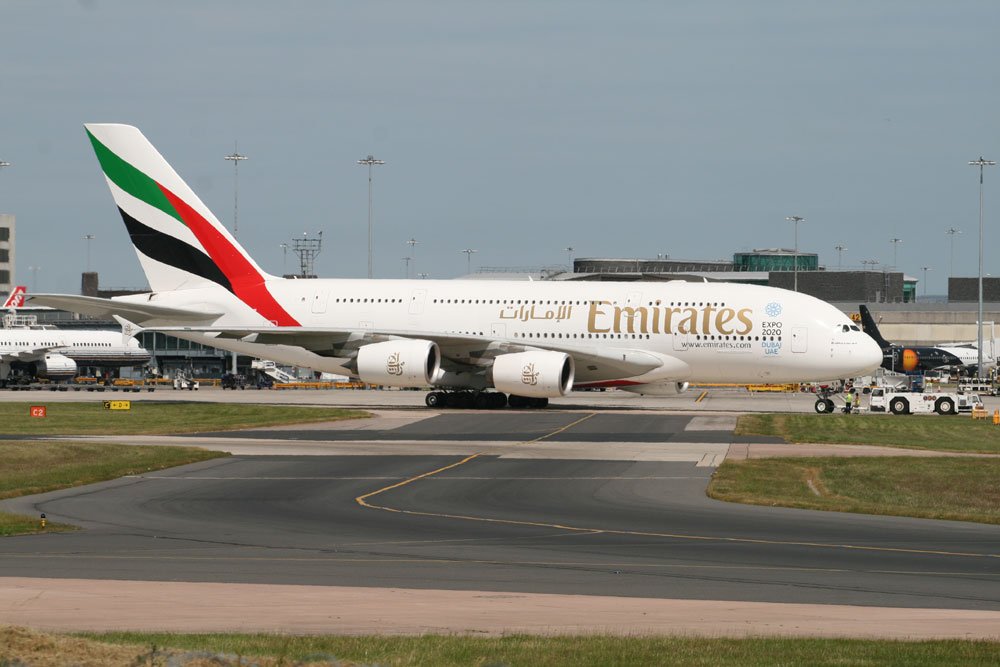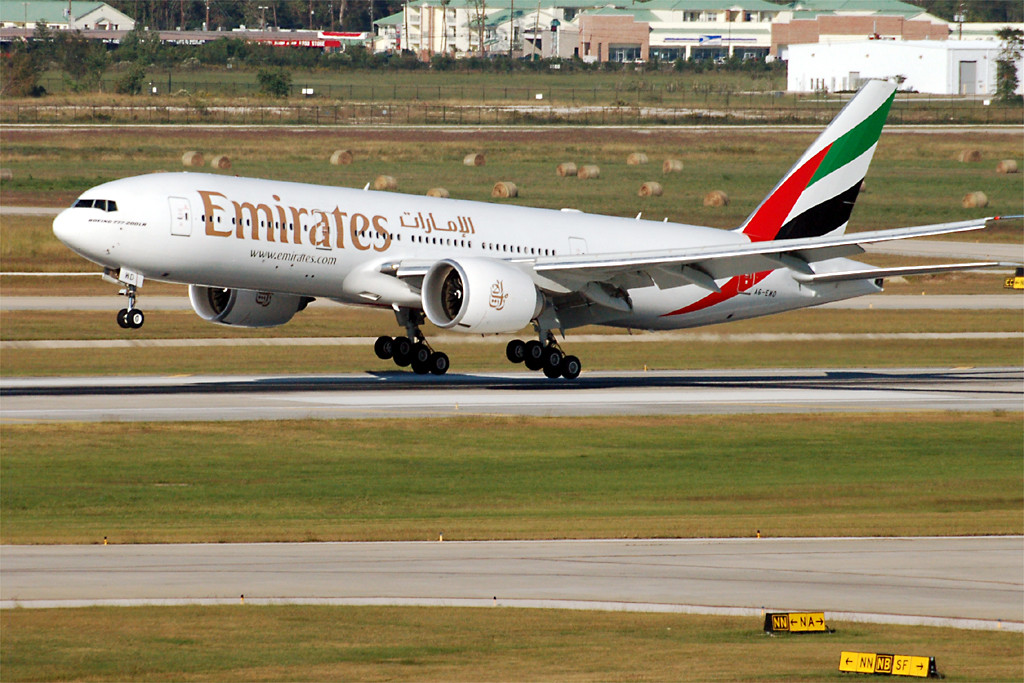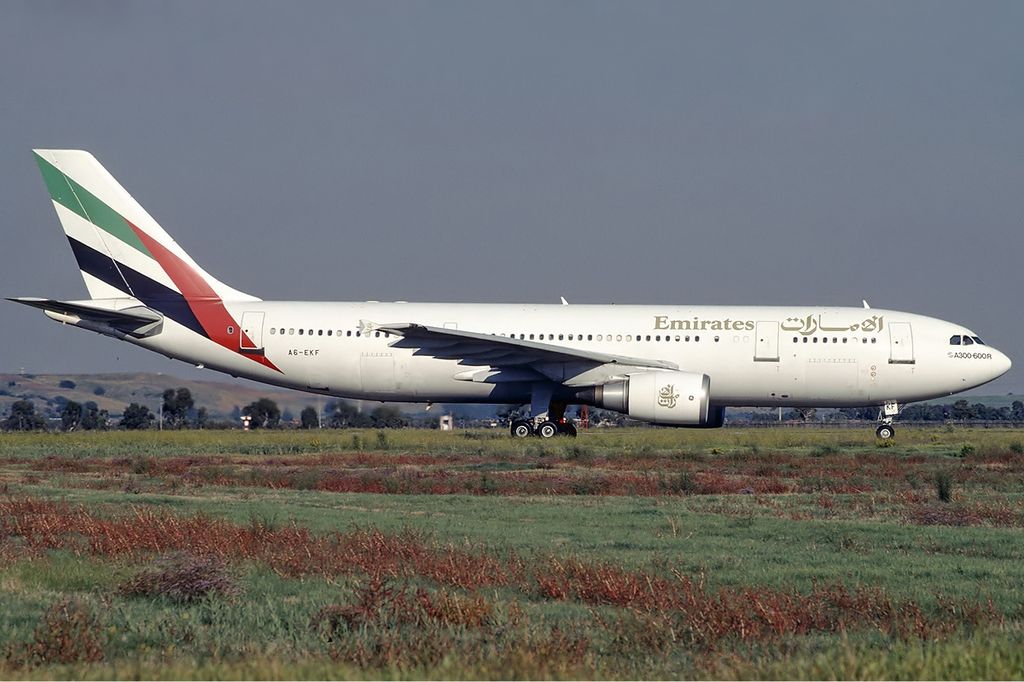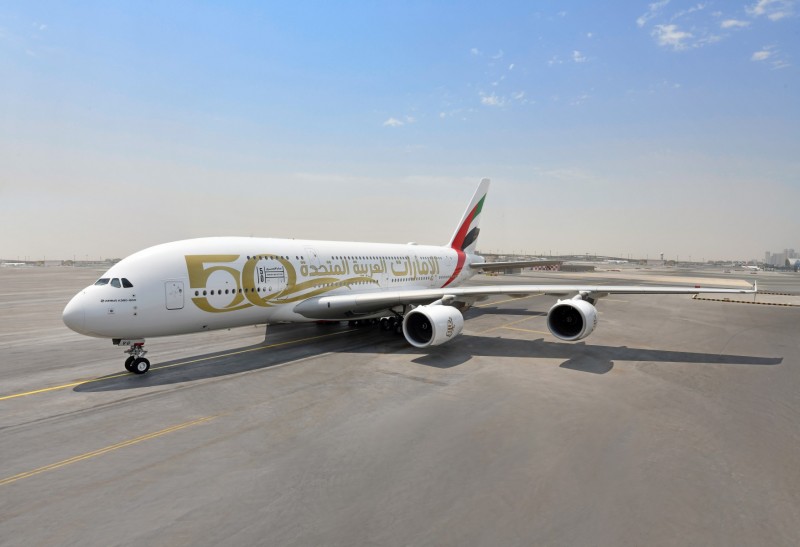Summary
Emirates is one of the world’s best-known and most respected airlines.
Based at its Middle East hub at Dubai International Airport, it links all corners of the world through an efficient transfer system, and also brings thousands of visitors every year to the UAE.
Emirates has a fleet consisting entirely of widebody aircraft, and its route network comprises many long haul routes, as well as a busy regional network around the Middle East.
Emirates Fleet Today


By Alex Steffler from Houston, TX, US (Emirates Uploaded by Altair78) [CC BY 2.0 (http://creativecommons.org/licenses/by/2.0)], via Wikimedia Commons
In fact, Emirates is the world’s largest operator of the A380, with 119 currently in its fleet, bucking the trend elsewhere where airlines are beginning to retire these superjumbos.
Its fleet comprises:
- 119x Airbus A380-800
- 10x Boeing 777-200LR
- 123x Boeing 777-300ER
Emirates’ Previous Fleet

Aldo Bidini (GFDL 1.2 <http://www.gnu.org/licenses/old-licenses/fdl-1.2.html> or GFDL 1.2 <http://www.gnu.org/licenses/old-licenses/fdl-1.2.html>), via Wikimedia Commons
Emirates has flown a wide array of different aircraft types since it was founded in 1985.
It started life with Boeing 727-200s and a 737-300, then added widebody Airbus A300s and A310s.
From 1999 the Airbus A330-200 became a staple of the fleet, alongside A340-300s and -500s.
Additionally, a large fleet of older Boeing 777-200s and -300s was also operated.
Emirates’ Future Fleet

Naturally, an airline of Emirates’ importance and growing dominance of world air travel routes needs a steady pipeline of new aircraft on order, both to keep its fleet modern and efficient, and to offer the best to its loyal customers.
At present, Emirates has almost 200 aircraft on orders, including two new types and one new sub-type. Its orders comprise:
- 50x Airbus A350-900 – deliveries due from 2024
- 115x Boeing 777-X – deliveries due from 2025
- 30x Boeing 787-9 – deliveries due from 2025
These new types will open up new opportunities for Emirates, especially given the long-haul capabilities of the A350 and 787 in particular.
No routes have been announced for these new types yet, and it is anticipated that older 777s will be replaced by these new deliveries.




